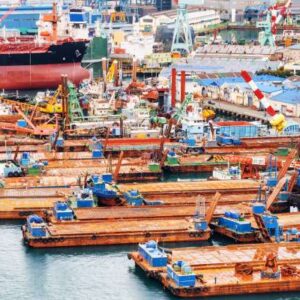Port performance worldwide declined between 2020 and 2024, largely due to the Red Sea Crisis, operational challenges at the Panama Canal, and lingering pandemic-related disruptions. Despite these shocks, efficiency gains varied significantly across regions and income levels, highlighting uneven recovery patterns among global container ports.
The Container Port Performance Index (CPPI) shows that East Asian ports led global rankings in 2024, demonstrating improved performance. South Asian ports also achieved remarkable recovery over the past year, while ports in North America and Europe maintained resilience, keeping scores close to their 2023 levels.
Improvements were not limited to high-income countries. Several developing country ports—including Dakar (Senegal), Jawaharlal Nehru (India), Mersin (Türkiye), Port Said (Egypt), and Posorja (Ecuador)—recorded notable gains in both scores and rankings between 2020 and 2024. These successes were attributed to strong political commitment, strategic partnerships with global terminal operators, streamlined trade procedures, and targeted financial investments.
The fifth edition of the CPPI provides a comprehensive benchmark for 403 container ports worldwide, analyzing over 175,000 vessel calls and 247 million container moves. By emphasizing total vessel time in port as a core indicator of operational efficiency, the report sheds light on the resilience and reliability of global trade networks. This edition also introduces a multi-year trend analysis, offering a deeper understanding of port performance evolution over the past five years, and identifying whether ports have improved, declined, or remained stable.
The report highlights actionable strategies to enhance port performance, such as implementing 24/7 crane operations, optimizing crane deployment, and integrating digital platforms with customs and logistics partners. These measures can deliver tangible gains in competitiveness, reduce delays, and increase resilience against disruptions.
Experts note that the CPPI serves as a diagnostic tool for policymakers, port authorities, and logistics operators, enabling them to identify structural inefficiencies and develop targeted interventions. Understanding and improving port performance is critical for sustaining global trade, supporting economic growth, and enhancing competitiveness in an increasingly complex shipping environment.






